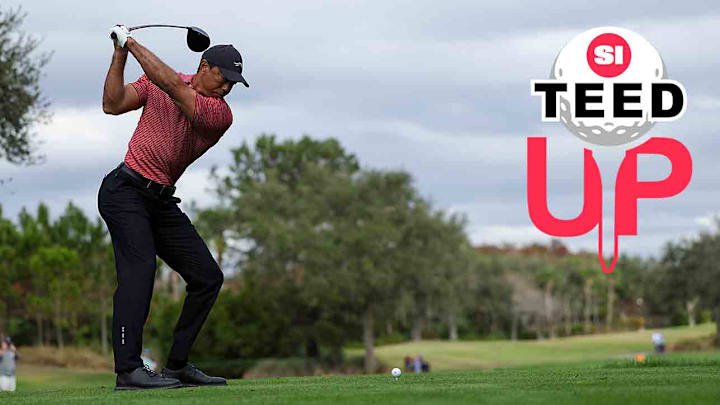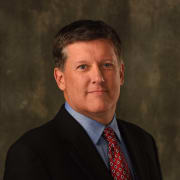Tiger Woods Offered a Glimmer of Hope for 2025

ORLANDO, Fla. — The skeptics still have plenty of reasons to maintain their doubts, while the optimists were given just enough evidence to believe that brighter days are ahead for Tiger Woods.
The man himself offered no verbal clues, only the physical ones we could witness with our own eyes over three days at the PNC Championship, where the 15-time major champion lost in a playoff with his son, Charlie, to Bernhard Langer and his son, Jason.
The 36-hole scramble that included a Friday pro-am round has been a tiny peek into Woods’s injury-plagued status over the past five years, going back to 2020 when he and Charlie played it for the first time.
The problem is the small sample size of golf on a Florida resort course in a friendly exhibition coupled with Woods’s own cryptic assessments really offer very little in the way of projection, in this case toward the 2025 season, when Woods will be 49 years old.
In 2020, during a COVID-interrupted season, Woods’s participation at the PNC was more about Charlie, who was doing it for the first time. Little did anyone know that just a few days later, Woods would endure his fourth microdiscectomy, a lower back procedure that was an alarming indication that maintenance was needed following the 2017 spinal fusion.
The conjecture soon became whether or not Woods would play in the 2021 Masters, rendered moot when he was involved in a serious car crash in February, one that led to numerous surgeries and a compromised lower right leg.
That he managed to return for that event in 2021 was a testament to his will to get back, but anyone could see that Woods's recovery was on-going and lengthy.
A year later, Woods had miraculously returned and made the cut at the Masters and PGA Championship, then missed the cut at the British Open. A return at the Hero World Challenge was aborted at the last-minute due to plantar fasciitis, a direct result of his leg issues. He again played in the PNC with Charlie, but 2023 saw more disappointment as Woods played four rounds at the Genesis Invitational, but had to withdraw before the conclusion of the third round of the Masters.
An ankle surgery ensured and Woods returned at the Hero, where he played all four days leading to subdued optimism for 2024 and another start at the PNC.
As we learned, 2024 became the year where his back problems surfaced again. After making the cut at the Masters and finishing 60th, he then missed the cut at the remaining majors before yet another back procedure in September.
His inability to play the Hero earlier this month was another concern, but then Woods showed up in Orlando, walked all three days without use of a golf cart, showed plenty of power off the tee and seemingly had some semblance of a short game, despite the obvious rust.
It was difficult not to be encouraged in some ways. Woods looked about as happy and content on a golf course as he has at any time in the last five years, much of it due to playing again with his son.
“He’s got a lot more game than most of us,” said Bernhard Langer afterward. “Even when he is 70 percent, he’s still a force to be reckoned with. He was moving fairly good. I was watching his swing and he was going after it. Just playing everything with a cut for most things, but he felt pretty comfortable out there, I thought.”
Woods was given ample opportunity to expand on any optimism he might have felt, but typically avoided it. Earlier, he had noted that his back feels much better but that “he has a long way to go.” He suggested that his game is nowhere near that of a tour-level player.
“Comparing for competitive play is different,” he said. “That takes months, weeks. But it starts with each and every day. You just do the little things correctly and they add up.”
There were enough anecdotal signs to suggest there is at least some restrained optimism about 2025.
Woods looked better walking over three days than at any time since the crash. For most of the competition, he showed no signs of a limp. Although a golf cart was available to him, he did not use it.
Tee shots have never really been the problem for Woods throughout the back and leg issues. Walking has made being competitive over 72 holes the biggest obstacle. And so, too, have his back troubles, which show up more in the short-game area for several reasons: it hurts for Woods to bend at the waist when his back is bothering him, thus he doesn’t spend the necessary time practicing.
While Woods has not said when he resumed practicing and playing, he clearly had put in some work. You don’t hit a driver off the deck—as he did during Sunday’s final round—without some practice. Same with some of the approach shots he hit both days. And while getting a read from Charlie’s first putt, Tiger made plenty of nice putts.
It's Sunday.
— PGA TOUR (@PGATOUR) December 22, 2024
Tiger is contending.
He's hitting driver off the deck.
This is fun 😎
📺: NBC pic.twitter.com/VDqpNRDYvM
All of that is fine, but what does it mean for 2025?
Woods acknowledged during a news conference at the Hero that he didn’t play enough this year to be prepared for the majors. Does that signal more events? Possibly. But don’t expect any schedule to be robust.
Don’t expect to see Woods in a PGA Tour event before the Genesis Invitational, which he hosts, the week of Feb. 10. There will be the hope that he plays the Farmers Insurance Open at Torrey Pines in late January, but the Tiger of today is not the Tiger who won there eight times.
Torrey is a difficult golf course with considerable rough and typically cold temperatures. It is not a good recipe for him.
Nor is Pebble Beach—where Woods could use his own exemption into signature events—which he might love to play again, save for the typically cool temperatures and long days.
Woods will likely be visible prior to Riviera. His Jupiter Links TGL team is scheduled to play on Jan. 14 and Jan. 27 and given Woods’s ownership stake in his team and the TMRW Sports endeavor, it would be surprising to see him skip.
While a couple of hours on a simulator is not anywhere near playing on a course, the data will be there for all to see. How far is he hitting his driver? What is the ball speed? How dialed in will he be on approach shots?
It will be a small sample size but a few clues.
Woods turns 49 on Dec. 30. His outlook for next year remains somewhat murky—as has been the case for awhile now.
“It’s training, each and every day, doing the little things and keep progressing, and I’ll keep progressing forward into next year,” he said.
Ryder Cup pay fallout
It's naive to think the U.S. Ryder Cup pay-for-play issue will go away.
Rory McIlroy couldn’t resist getting in a dig last week during a conference call to promote the TGL, and there will be all manner of conjecture about pay vs. pride as the matches approach next year.
Last week, the PGA of America announced that it would be giving $500,000 to each member of the U.S. team and captain Keegan Bradley. (Lesser amounts will go to the assistant captains.) Of that total, $300,000 is to be directed to a charity of their choice. They are free to do with the remaining $200,000 as they wish.
And thus, the era of players getting paid to compete in the Ryder Cup has started.
Going back to 1999, players got $200,000 to give to charity. The money was never funneled through them, so there was no tax benefit. It was simply sent by the PGA of America to the charity.
But as McIlroy noted, the European side won’t be getting paid, which will lead to plenty of fodder.
That didn’t bother Mark O’Meara, who in 1999 was behind an effort to get players paid. At the PNC Championship last week, he said in an interview that “they should have listened to me,” as he figured this day was coming.
O’Meara, now 67 and a two-time major champion, remains unchanged in his views. “I’m a pro golfer. I play golf for a living,” he said. He noted that the event generates millions and their stars, until now, are not compensated.
Stewart Cink, who played on five U.S. Ryder Cup teams and was an assistant in 2023 for the loss in Rome and a Presidents Cup assistant this year—where all received $250,000 to cover various expenses. “I gave the rest of it to charity,” he said.
“I would have never lobbied for it before,” Cink said. “But now that it’s flipped around and they’ve said they’re going to pay the players, I’ve got no problem with it. I know it’s kind of a two-sided view of it. But the event does make a lot of money. It’s a business, and these guys are professional athletes. We’re now paying college athletes to go to school and play their sports (via name, image and license deals). So I don’t have a problem with it.”
Tom Lehman, who was captain of the 2006 U.S. team, said he didn’t sign a letter that 12 past captains signed prior to the PGA of America’s decision in which they asked that players not be compensated.
Lehman, who won the 1996 British Open, said he defers to Bradley.
“I feel like the role of a past captain is just some small way to support the new captain and the team and whatever you can do to support them in any way, whether it be a lot or a little or nothing,” Lehman said. “So I tend to take the attitude as, hey, whatever the captain wants is kind of what I want. ... The world has changed, it's a lot different world today than it was 20 years ago and 40 years ago.”
Lee Trevino, who recently turned 85, captained the U.S. Ryder Cup team in 1985, said he was not in favor of direct payments.
“I don’t think there’s anything wrong with giving those guys $1 million—if they give it all to a local charity where they live,” Trevino said.
Bryson’s U.S. Open-winning wedge
The club Bryson DeChambeau used time after time in hitting shots over his house in an attempt to make a hole-in-one? The same one he used on the 72nd hole of the U.S. Open at Pinehurst, where he hit a long bunker shot from 55 yards to set up the winning par putt that defeated Rory McIlroy.
It was a 55-degree wedge that DeChambeau said he will donate to the USGA. The grooves have been about worn out by now, especially after all the effort—16 days worth—of attempting the ace over his Dallas home to a green in his backyard.
During a recent interview, DeChambeau joked about having 100-yard shots dialed in to the point of never hitting them outside of 10 feet.
“Ultimately that is the goal,” he said. “Hitting that many shots over my house to my feel for it dialed in. But it’s a little bit easier off a mat.”
And that’s why, DeChambeau said, he had just a fleeting moment of angst over blading a shot into the glass in his home. He said it was unlikely he’d hit a heavy shot off the mat.
DeChambeau carries a 60-degree, 55-degree, 50-degree and 45-degree wedge as well as a pitching wedge. A full pitching wedge yardage for him is 175 yards.
His next YouTube project? Trying to break course records at random courses.
